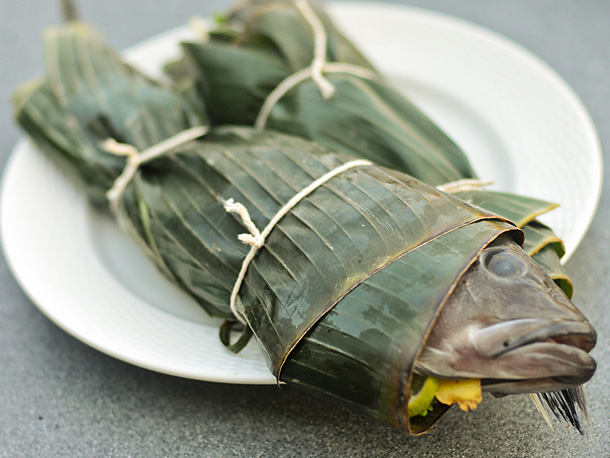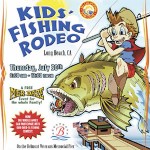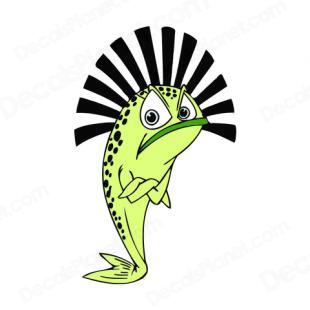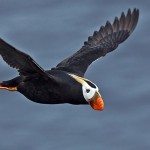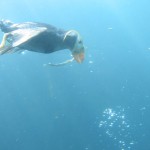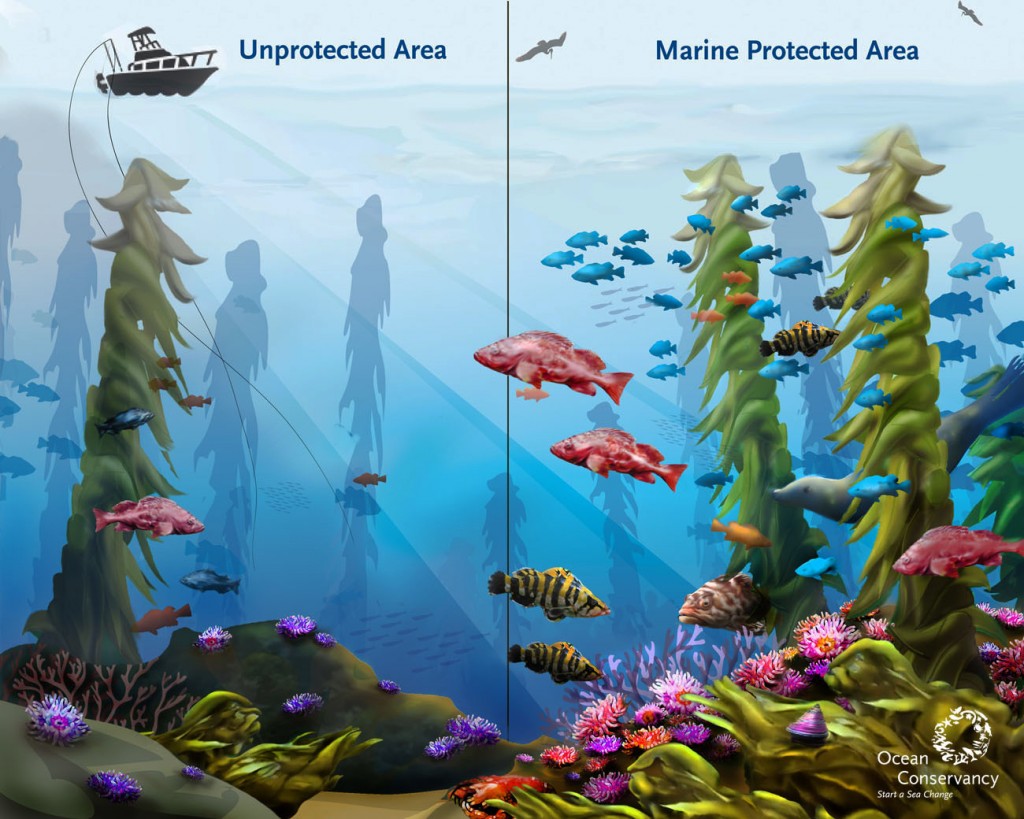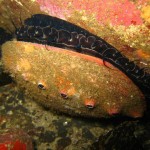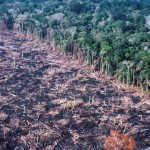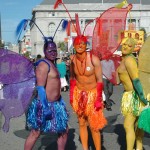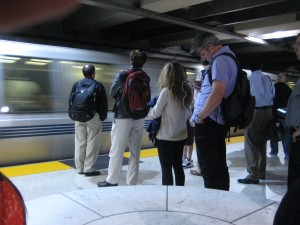That’s a Wrap
Softserve Experience
This breath-taking picture is worth citing. I wish I had the opportunity to take that picture.
The one above is more of the water falling than whirling, so a better picture of my subject:
Maelstroms are GIANT versions of little whirlpools. Maelstroms happen in the ocean and they’ve been mentioned in such great stories such as Homer’s Odyssey or Disney’s Pirates of the Carribean. Their whirlpools would suck in whole ships and bash them to bits against the ocean floor.
Whirlpools may almost reach the scale of maelstroms during a tsunamis because of the change and force of water displacement. In reality, maelstroms don’t really occur to the scale of our human imagination. These “ocean swirl” can most often be defined as a vortex. They dp sometimes catch boats because of their strong currents so they are dangerous.
There are a few famous ones, and I found a video of Saltstraumen in Norway (it’s so famous it has a name).
STORY:
This is the last story of the summer. The people I’ve met, the information I’ve learned, and the things I’ve seen fluttered around me in little bits and pieces. This experience did not overwhelm me, nor did I glide over it. How I’ve seen these 8 past weeks: those bits are not part of me and I going back to MIIS a stronger, smarter, better prepared professional for my 2nd year.

Hiking trip with the SF, Oceans team to Point Reyes. This piece of land once started near Los Angeles and has been traveling up the coast since…a long time ago.

I love how sustainable everyone’s meal is. We brought stuff back to the office to compost, people brought food in jars, and people prepared impressive foods I’ve never even heard of!

My desire to taste-the-city lead me to take a Vogue class here. I learned how to strut my stuff on my tippy toes, how to frame my face with my hands, how to drag my body elegantly (not very elegantly) across the floor, and that hour was more than enough to fulfill that impulse.

Which reminds me to provide closure: No seaweed tea time ever happened (I’m not holding back). Too much to do, not enough time here. Yes…that’s a terrible picture, but I only have this one picture. Usually there’s no clutter on the table and there are other people.

An excellent way to end the summer. Interns, consultants, EDF staff, writers, scientists, vegans, carnivores, we all had a wonderful time at Tataki South’s Sustainable Sushi on Church St. August 8th, 2012. A must try: Artic Char.
What more can a grad student want from their summer internship.
Essentials as a MIIS student: Your Tongue
SUBJECT: CLAMS-general
I’ll write about tongues, but first, about the clam and its foot.
Clams are essential for ecosystems health. They filter dirty particulates from the water and then release clean water back into the environment. Clams are much like oysters and mussels in this manner. Mollusks are important in the Earth’s water cycle and are often found in sandy or muddy banks cleaning up after everyone’s mess. How does a clam clean up our mess you ask?
 This is the inside of the clam.
This is the inside of the clam.
In a sentence, basically, water with particulates goes in the clam through the foot and clean filtered water with-out particulates goes out the foot. We are lucky that these amazing creatures do so much for us, and have a high fecundity (fertile at a young age and has many babies), and have a low trophic level (meaning it takes very little food input to receive a lot more output), and taste amazing!
RECIPE: Cynthia’s never-been-tried-before, let-me-know-how-it-tastes Clams in black bean sauce
Ingredients: 1 lb of clams, 1.5 tablespoon of Lee Kum Kee (in red, green, gold glass jar) Black Bean Garlic Sauce, 3/4 cup of water
Servings: 2 people
Time: 35 mins
Directions:
1. From an Asian market: Choose clams that move by squirting you with water when provoked, sitting in fresh clean flowing water. From a reputable store: compare the species and source of the target clams to the Monterey Bay Aquarium’s Seafood Watch ap to make sure the clams are from a sustainable source.
2. When home, gently slide clams out of bag and rinse them in running water in a non-metal bowl until water is clean. Rub any residue off the clams. When complete, refill the container with water until 1 inch above clams. Place 2 metal spoons at opposite sides buried into the clams to induce them to spit out undigested contaminants. Leave for 25 minutes.
3. Rinse off the clams one last time. Pour out the water from the clam bowl. Be ready to cook.
4. Mix the 2 tablespoons of Black Bean Garlic paste with the 1/2 cup of water. Have it ready.
5. Heat your Non-teflon wok/pan (the clams will scratch the material off which is bad). Heat the wok until it’s hot. When hot, Immediately pour in the clams, and clamp down the lid to let the heat steam-cook the clams.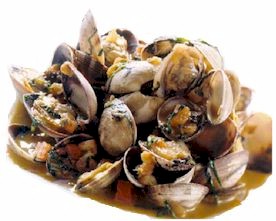
6. Wait 30 seconds, then open the lid and pour in the watered-down sauce. Use a spatula or wooden spoon to mix the clams and sauce around, then reclose the lid. Turn heat down to med-high (so you hear the clams sizzling, but not burning) for 5-10mins.
7. Check clams after the initial 5 minutes because a clam is done when the shell pop open and the flesh is exposed. Finish time varies with stove temperatures. When clams are opened, pour dish onto a platter and serve hot.
STORY: ABOUT THE TONGUE
When I had meant tongue, I meant language. MIIS, the graduate institute of international studies, values its multi-cultural atmosphere and so every student must be very proficient in at least 1 other language. This means that every student starting MIIS knows a minimum of 2 languages well. For example, I speak 4 languages well, and I’m learning a couple other languages from fellow students – just for kicks. It amazes me to hear private discussions of varied languages all around campus, which is fascinating to witness, but it’s become habitual after a year. I love the encouraging language atmosphere because stumbling through a language is difficult and can be discouraging.
One skill our Chinese teacher encourages us to use is to conduct professional research in another language. Even in our primary language it is not easy to absorb a multitude of high level research and then produce one clean analysis. There is also a very big difference between looking for research in English and translating the results into Chinese versus searching for all the research in Chinese and producing a Chinese document. Actually, it is just like a clam! A clam intakes particulates and produces one clean stream of water!
So apparently I am a clam at EDF (contrary to someone else comparing me to an anemone)! I spend most of my time intaking lots of scientific articles and I produce pure data for PSA analysis, or condensed reports for other teams to use. Here is what I see everyday:
REFLECTION:
Thankfully, I can be an American clam while at EDF. No one here has asked me to conduct research in Chinese because most of the focus is in currently in Latin American.
Unfortunately, I will have to go back to trying to be a Chinese clam when I return for my 2nd year of graduate school at MIIS.
Yet, I know being a Chinese clam will have its advantages as China’s impact in the seafood realm increases. As of now, I am a much more efficient American clam than a Chinese clam. Speculating, I am an American-Chinese hybrid species sitting in an American estruary and when I encounter Chinese water I find that their particulates are particularly difficult to digest, but hopefully with more practice it will become easier.
Sea-Tea Party
SUBJECT: SEAWEED
It’s defined as algae and also kelp. Seaweed is everywhere in the ocean, you could say it’s in freshwater too…but those are more pond-weed.
It’s wet, needs sunlight to photosynthesize into energy to grow, but they do not have roots like plants. Plants on land have roots to drink water, but seaweed are surrounded by water, so their “roots” are called “holdfasts” which help them hold tightly to rocks. Seaweed need much nutrients to survive, and thus they also can provide much nutrients.
Nutrient which can be consumed through many means, but have any of you tried Seaweed teas?
STORY:
Quick recap before this entry was deleted: So, every week I attend a “tea-party.” Except, the hipster culture would rather have us label it as “tea-tasting”. So, each week at our “tea-tasting” we try a different variety of teas according to a theme. So far we’ve tried flower teas, black teas, chai teas, and in my quest to find the next theme I’ve discovered that there exists “seaweed teas”. So far, I haven’t been Able to find any, but I’ll be sure to follow-up with a true story when we do. Instead, I’ll tell you about our tea connoisseurship.
We’re about 5 people, most of the people in the group are my peers and we talk about everything except work. We once did a session on dealing with stress and frustrations. I found it the session temporarily effective. =) I usually treat my stress with naps after a shower or at the bottom of an ice cream pint-and I find them highly effective. I was invited the 2nd week of my internship and it has been an on going event. We have fun, but NOT THIS MUCH FUN!
REFLECTION:
This event is better than having lunch with co-workers or happy hours! We’re not running around searching for food or talking about work – which many people find lunch breaks to be: venting or troubleshooting about work. Happy hours consist of small talk and networking. Now, tea time is a good time because it’s not small talk, it’s not work talk, it’s relaxing say whatever else talk (but we’re still networking). Why isn’t this part of normal American workdays?
The “Seaweed tea experience” story in future post.
What do Rodeos & Interns Scavenger Hunts have in common?
ANSWER: It’s a Race to the Finish! 
SUBJECT: Fishing Rodeos
A Rodeo is like Disneyland. Yes. Bear with me. Then I have to add: Fishers (fishermen and fisherwomen) are like 5-11 year old children.
Okay, NOW how excited are 5-11 year old children when they are at Disneyland? Okay, THAT’S how excited Fishers are when they are at the Rodeo.
Not THIS RODEO, but THIS RODEO.
 Fishing Rodeo is a term used to describe the frenzy of fishers that start fishing out on the ocean RIGHT when regulators announce “The season is open.” It’s a rodeo because, for places that do not have catch-share systems (it’s in the news), there’s limited time to catch fish and so the fishers try and catch as-many-as-possible in that short span of time. Land rodeos are where cowboys rope cows and pigs, Marine rodeos are where fishers catch fish.
Fishing Rodeo is a term used to describe the frenzy of fishers that start fishing out on the ocean RIGHT when regulators announce “The season is open.” It’s a rodeo because, for places that do not have catch-share systems (it’s in the news), there’s limited time to catch fish and so the fishers try and catch as-many-as-possible in that short span of time. Land rodeos are where cowboys rope cows and pigs, Marine rodeos are where fishers catch fish.
STORY: As a CBE fellow this summer, I recieve an internship at EDF. I am just one of many people that flow in and out of this organization, but there is a definite group of summer interns at our office. We are 11 people and besides our Thursday brown-bag seminars, EDF also organizes a team bonding experience for us. Our creative Intern Director (ID) decided to plan a city scavenger hunt versus something like a field trip.
We pulled numbers from a hat: 3 groups of three and 1 group of two, and waited until the next day.
 We all went to work in semi-coordinated outfits per team. The ID told us to dress comfortably, so many of us wore gym clothes (so we could run faster). We had a delicious lunch with fancy small bottles of coke in the conference room. Then, we collected our possessions for the ride down the elevator to being our 3 hour scavenger hunt. When we reached the lobby (28 flights down), the ID and our receptionist handed the groups the envelopes, off we went: all darting off in different directions. Here’s the items we had to find, and the rule was that the groups with 3 people had to include themselves in the pictures.
We all went to work in semi-coordinated outfits per team. The ID told us to dress comfortably, so many of us wore gym clothes (so we could run faster). We had a delicious lunch with fancy small bottles of coke in the conference room. Then, we collected our possessions for the ride down the elevator to being our 3 hour scavenger hunt. When we reached the lobby (28 flights down), the ID and our receptionist handed the groups the envelopes, off we went: all darting off in different directions. Here’s the items we had to find, and the rule was that the groups with 3 people had to include themselves in the pictures.
1) Cable car – a real one that is moving
2) Sf Fireman or firemen
3) A person wearing plaid
4) A live crab
5) A person wearing a fedora hat
6) A person wearing SF Giants gear
7) A male tourist wearing shorts with socks pulled all the way up
8) A female tourist wearing Capri pants and/or printed top
9) A street performer (juggler, magician, one of those spray painted people)
10)*Take a picture of someone else taking a picture w/out them knowing you are taking their picture (can’t be another team! Must be a stranger)
11) Find 3 adorable dogs, need one pic of each dog
12) A dapper well dressed man
13) A bike messenger
14) Any SF landmark
15) Any water fountain
16) A Statue of any type/form
17) Canadian tuxedo (denim on denim)
18) Cooked or live poultry hanging in any window front
19) *Any person sleeping out in public
20) A church
- Guess
- Aw.
- Liars! There were no live crabs in that tank! It’s just a sign!
- Miming on a bike to the finish line. Effective? Yes.
- They found hanging poultry in a window. Enthusiasm doesn’t fully describe his feelings.
- Double wammy
- SF Giants hat is what we’re aiming for here.
- The closest we could locate near the Financial District.
- Creepy? Naw.
- PuPPIES! One group ended up paying someone to take their dog’s picture. Capitalists.
- Ahah! The Donkey Dung sea cucumbers from Belize I’ve been researching.
We had between 1pm to 4pm to complete our task.
The first group came back at 2pm…..followed by 2:05, 2:06 and 2:25pm….why? Why didn’t we stay out to enjoy the sun and bond (which was the point of this activity)? Because EVERYONE wanted to WIN. The prize: unsignificant, we had no clue of its identity.
REFLECTION: So, what did I learn from that experience?
The design of the system is very important in how you want the outcome. If the goal of the scavenger hunt was for all of us to bond, maybe the goal should have been quality of photos versus timeframe to complete the task. The same thought applies to fisheries. As of now, the goal of fishers is to catch as many fish as possible, but maybe the better goal should be the quality of fish (I would speculate, but this is a complex and political subject). Yet, there are small market forces that encourage collection of poor quality fish for use as fish meal (fish food for aquaculture and livestock feed) and fertilizers (crops benefit greatly from ocean compost). Rodeos are crazy because a) in the frenzy to fish as-much-as-possible in a given time, fishers will take unneccessary risks such as working extra long hours and that creates fatigue which results in dangerous accidents out at sea, and b) because all the fishers are catching the same fish at the same time, market prices for fish drop (great for consumers): which provides terrible returns to the fishers and results in the majority of fresh fish is turned into processed fishsticks: so they last longer.
Due to being done 2 hours early…we were sent out for round 2.
Our choice:
Street perform, whichever team earns the most money wins
-or-
I am Mad
Marine Reserves – Mr. Puffin’s story
Marine Reserves are stricter Marine Protected Areas.
Marine Reserves are Not popular with the fishermen,…nor politicians, but they are important to the sustainability of seafood. Let’s being tonight’s story.
SUBJECT: TUFTED PUFFIN
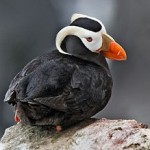 Mr. Puffin (he’s a Mr. in his breeding plumage) lives on the Pacific coast. He migrates looking for food and female puffins. Puffins usually live north of San Francisco, but they’ve been spotted as far south as San Diego, California. They extremely good looks conceals the fact that they are very conservative animals.
Mr. Puffin (he’s a Mr. in his breeding plumage) lives on the Pacific coast. He migrates looking for food and female puffins. Puffins usually live north of San Francisco, but they’ve been spotted as far south as San Diego, California. They extremely good looks conceals the fact that they are very conservative animals.
Once a pair commits to having a family, they slowly work together to build their nest (in a strong warm cave), and they both raise the young-ling until it flutters off on its own. These puffins form long lasting paired bonds, unlike those promiscuous dolphins.
Since Mr. Puffin can:
and
He’s provides his observations between protected and unprotected fisheries and how it’s much like his observation of protected and unprotected old growth forests-remember the spotted owl?
The obvious difference, is that Mr. Puffin relies on Marine Reserves to provide his family anchovies while there’s not really anything he wants to eat from Old Growth Forests.
Marine reserves do not allow ANY fishing or development in its waters. Eco-tourism is allowed. This differs from Marine Protected Areas which allow an extent of fishing and extractive activities such as extracting oil.
Marine reserves are undesired by fishermen because it denies them access to regenerated or virgin fisheries. However, if these marine reserves are also exploited….then there will no more fish left! You see, the magical thing about having SOME marine reserves, the thing that fishermen need to appreciate, is that it’s proven to increase fish stock by 446%! and this overpopulation of fish spills into Non-protected waters providing fishermen their prey. Again and again, studies show that marine reserves are positive in every way!
We’ll give you one reason why marine reserves are effective. Mr. Puffin saw Mr. Red wander for weeks looking for a mate, but he couldn’t find one! Mr. Red isn’t a fast moving animal nor does he have the best sense of vision or smell. He’s approach is to crawl around until he bumps into a potential mate. Mr. Red does not live in a marine reserve, he lives in Santa Cruz where there’s a 4 abalone limit per-recreational fisher. While this seems like good management system for preventing over-harvesting of abalone, Mr. Bachelor Red would beg to differ. It would increase Mr. Red’s chances of finding a female if Santa Cruz split the habitat into 1/2 a marine reserve and 1/2 still open to fishermen (still with a catch limit, but maybe the limit can be set higher).
Mr. Puffin has seen the destruction of clear cut forests.
He also sees the benefits of protecting select forests.
If Forests are habitats and Oceans are also habitats, then Mr. Puffin concludes that there needs to be more Marine Reserves to ensure that some fragile ecosystems are preserved. Ecosystems like Sequoia National Park in California!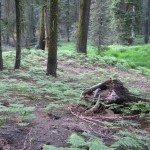
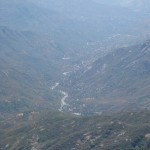


Do you know how many granite tables could be made from this National park? Answer: LOTS!
REFLECTION:I know I’m not in a foreign country, but California often seems like a whole country with many secrets. I’m born a Californian and this was my first visit to this National Park south of Yosemite. I’ve read it was an undertaking to establish these national parks, but thankfully they still exist and they are indeed breath-taking. I know the world is happier for preserving these tiny pots of ecosystems and I hope we can say the same for marine ecosystems years from now.
Background: San Francisco, California
What image do you imagine when I say: San Francisco?
- SF’s pride and joy. The city is decked in orange and black all over the streets in discriminately: European children, the hairy homeless, the little old Asian lady pulling her roller of plastic bags, the group of young business folk dressed in heels and ties. All of them migrate towards the baseball stadium to watch these daily games. Crazy! Baseball happens just about every day! And they sell tickets!
- Special fans will leave their head in a squash for their team. SF is full of these special people.
- Makes sense since they are doing very well this season. The 27 year old Matt Cain, pitched a perfect game. Also, until last night, they had 4 perfect games in a row! (meaning that the other team scored 0 points). They also recently beat their rival: The Dodgers. The biggest deal: they won the World Series last year.
- These mystical creatures come out in force one weekend a year. I was lead to believe they would be out-and-about on Sunday for the parade, but the commuters unfortunately had to sit through traffic FOR-EVER Friday night because there was a pre-parade practice. Practice, PRACtice, PRACTICE is what my ballet teacher always told us.
- That’s refer to the Gay Pride parade of course. There are very liberal pictures of the event! I found the most blog appropriate ones to display. Surprises: How many people wore only underware, men dressed like women at a significantly higher ratio than women dressed like “men,” and there was an abundance of motorcycles and pets!
- SF is also home to many bridges. EVERYONE knows about the Golden Gate Bridge. It’s pretty, but how about the Bay Bridge? This impressive bridge penetrates Treasure Island (man-made military base, now turned to low-income housing, which is sinking due to sea level rise and bad foundation, but offers a spectacular view), and connects SF with the East Bay: Berkeley, Oakland, Fremont, etc… This is the view from our office =)
An interesting place to say the least. Found in 1776 by the Spanish, catalyzed mass immigration spurred by the Gold Rush. Now, San Fran is the “city” where everyone in the surrounding sub-urban flocks to for amazing foods, and cultural stimulation.
That’s SF! Just the tiniest tip of the fingernail in terms of describing it, but if you’re curious, come by and see for yourself!
Unremorseful Remora
It’s been 3 weeks living in the city and I’ve yet to find the “city life.”
However, it’s when you don’t look for it that you find what you’re looking for. Right.
SUBJECT: REMORA

A fish with a suction cup. You’d be surprised how many species with suction cups exist in the ocean.
This fish is not a parasite. It’s at most a little bit advantageous, but not to the expense of its host. This remora is the Belizian remora, but I’ll focus on general characteristics.
The remora doesn’t discrimiate who it associates with. They may decide as a group or individually to hang out with Mr. Shark or with Mr. Sea Turtle, or Mr. Elliot. What’s important is that its buddy a) doesn’t eat it (because some sea turtles prey on remora), b) provides it with transportation, and c) provides it with food.
Food can both mean, the remora will clean up the scraps too small for its large buddy/shuttle to consume or the remora will remove parasites from its buddy thus providing a service.

Remora (Echeneis naucrates), also known as Suckerfish and Sharksucker, attached to a Lemon Shark (Negaprion brevirostris). Found in most tropical and some warm temperate waters of the world.
What’s interesting to note, is that this fish Looks upside down, but here it is correct side up. It’s more aero-dynamic with it’s small jaw towards the body of the host/shuttle-fish.
However, sometimes, you will see a remora riding on top of the sea turtle’s shell. In which case, the remora is being transported and swimminig upside-down. That gives me a headache thinking about it.
STORY:
Yesterday night, I made like an unintentional remora and witnessed something I hadn’t planned on seeing.
I was on my way home and a studio I had been eyeing for weeks had its door opened, and so I went in to grab a class schedule. I noted that a clump of people were entering after me, but I assumed they were students heading to class. I guess I was curious and wanted to see what class they were taking. Oddly, then someone at the end of the hall ushered them…and me, down another hallway. Odd to be ushered to class…but I followed: up a flight of stairs, another turn, then another hallway, then we met a big smiling gentlemen sitting in a chair next to a closed door. He smiled at us, those people before me smiled back, I clenched a tight expression and he extended his arm to pull back a heavy door, and I was ushered from behind and followed two girls into a large dark room.
Just in time to see a dance show! It was very city-slick and very witty. Adjectives I could also use to describe it: expressive, passionate, strong, sexy, powerful, silly, thought-provoking, fun, and definitely memorable.
REFLECTION:
The fellowship/internship experience encompasses the majority of my time in SF, but most of it is spent on the computer researching. I’ve a few deadlines approaching, and when something interesting comes to my attention, then I’ll post it up. However, me blogging about my research …I guess I can summarize: this week I’ve been researching white papers on the biological, economical, and policies of sea cucumbers, Chilean conchelopas, and Mexican shrimps. Yes, hopefully I’ll have better stories to reveal about work otherwise I’ll have to wander the city more After work so you stay entertained. Ciao!
More civilized than you’d think: Caribbean spiny lobster
Who thought of this idea first? Humans or Lobsters.
SUBJECT: SPINY LOBSTERS IN THE GULF OF MEXICO
They are indeed spiny, but much sought after because they’re tasty.
A word I repeatedly read to describe this lobster is: Gregarious.
For a creature that spends most of it’s life building a den and dwelling in it (what I learned from the Monterey Bay Aquarium, but it may be species specific) I was open mind that maybe it could be both gregarious sometimes and sometimes a hermit…Just like people I suppose.
Love story: Female lobsters are smaller than males, and will spray chemicals to seduce the male lobster. This means female lobsters guest at the male lobster’s cozy home for a while. Don’t worry, the stuff wears away eventually. They’re not a monogamous creature (thank goodness at the rate humans eat them!). Females then walk away with the males sperm in a capsule for later (when she feels like the time is right for laying her eggs). She may have other priorities first. She knows best.
All the females and males aggregate when it’s time to move below 90 meters for Winter annually. They line up antennae to tail and follow the leader down down down.

- See! Antennae to tail!
- Why do you think they do that? Line up to migrate? Why wouldn’t the lobsters migrate to the secret meeting spot on their own? It’s not like they have a crowd of other sea animals in their way (like how some people need to hold hands to stay together in a crowd). We don’t know. No one knows (Yet).
STORY:
I take the bart home to and from work everyday. Yesterday, I happened to hit rush hour (something I managed to avoid the prior week). What I saw was so intriguing I took a picture (yes, I was the weirdo, but I’ve a blog!).
In all my years of taking the bart, and trying many metro stations in other countries, this was a new phenomenon.
